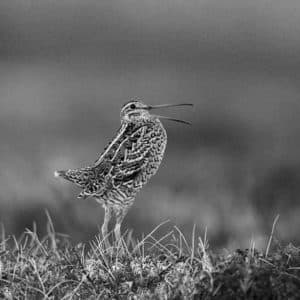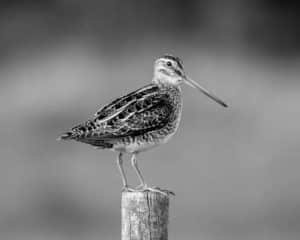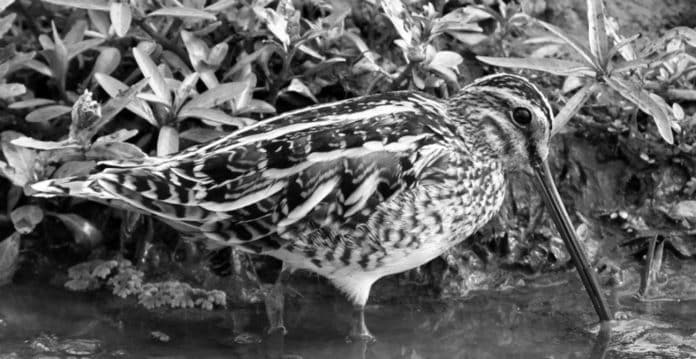Introduction to the Great Snipe
The Great Snipe in Tanzania, scientifically known as Gallinago media, is a fascinating bird species known for its rare and elusive nature. This medium-sized wader belongs to the family Scolopacidae and is widely recognized for its intricate courtship displays and distinctive drumming sounds. The Great Snipe is predominantly found in the wetlands and marshes of Europe and Asia, but it also migrates to Africa during the non-breeding season. In this article, we will focus on the Great Snipe’s presence in Tanzania, a country renowned for its rich biodiversity and stunning avian species.
Habitat and Distribution of the Great Snipe

The Great Snipe primarily inhabits wet meadows, bogs, and marshes, preferring areas with dense vegetation for nesting and foraging. During the breeding season, which typically occurs from May to July, the Great Snipe is found in the northern parts of Europe and Asia. However, during the non-breeding season, these charismatic birds migrate to Africa, particularly to countries such as Tanzania. The wetlands and grasslands of Tanzania provide an ideal wintering habitat for the Great Snipe, offering ample food and shelter for these migratory birds.
The Importance of Tanzania for Great Snipe Viewing
Tanzania’s unique geographical location and diverse ecosystems make it an essential destination for birdwatchers and nature enthusiasts. The country boasts an impressive avian population, with over 1,000 bird species recorded within its borders. Among these, the Great Snipe holds a special place due to its rarity and limited distribution. Tanzania’s wetlands and grasslands provide crucial stopover sites for the Great Snipe during its migration, making it a significant location for observing and studying this elusive species.
Best Time and Locations for Great Snipe Spotting in Tanzania
To have the best chance of spotting the Great Snipe in Tanzania, it is essential to visit during its non-breeding season, which typically spans from September to April. During this time, the Great Snipe can be found in several key locations across the country. One such location is the Serengeti National Park, renowned for its vast grasslands and diverse wildlife. The Serengeti offers excellent opportunities to observe the Great Snipe in its natural habitat, along with other bird species such as the Secretarybird and African Fish Eagle.
Another recommended location for Great Snipe spotting is the Selous Game Reserve, located in southern Tanzania. This pristine wilderness is home to a variety of avian species, including the Great Snipe. The reserve’s diverse habitats, including wetlands and woodlands, provide an ideal environment for the Great Snipe to forage and rest during its winter migration. Additionally, the Selous Game Reserve offers guided birdwatching tours, allowing visitors to maximize their chances of encountering this elusive avian treasure.
Tips for Observing and Photographing the Great Snipe

Observing and photographing the Great Snipe can be a challenging endeavor due to its secretive nature and well-camouflaged plumage. However, with the right techniques and preparation, the experience can be immensely rewarding. Here are some tips to enhance your chances of a successful encounter with the Great Snipe:
- Research and Learn: Familiarize yourself with the Great Snipe’s appearance, behavior, and preferred habitats. This knowledge will help you identify potential sighting locations and recognize the bird’s characteristic drumming sounds.
- Arrive Early and Stay Patient: The Great Snipe is most active during the early morning and late afternoon, so plan your outings accordingly. Find a comfortable spot near wetland areas and remain patient, as the Great Snipe may take some time to reveal itself.
- Use Binoculars and Telephoto Lens: A good pair of binoculars is essential for spotting distant Great Snipe individuals. Additionally, a telephoto lens will enable you to capture detailed photographs without disturbing the birds.
- Respect Their Space: When observing or photographing the Great Snipe, it is crucial to maintain a respectful distance and avoid any disturbances. This will ensure the birds’ wellbeing and minimize any potential negative impacts on their behavior.
By following these tips, you can increase your chances of a memorable encounter with the Great Snipe in Tanzania.
Conservation Efforts for the Great Snipe in Tanzania
The Great Snipe faces numerous conservation challenges, including habitat loss, degradation, and hunting. In Tanzania, several organizations and initiatives are working tirelessly to protect the country’s avian species, including the Great Snipe. One such organization is the Tanzania Bird Atlas Project, which aims to collect data on bird populations and their distributions across the country. This information is crucial for identifying key habitats and implementing effective conservation strategies.
Additionally, the Tanzanian government has designated several protected areas, such as national parks and game reserves, to safeguard the country’s biodiversity. These protected areas provide essential habitats for the Great Snipe and other bird species, ensuring their long-term survival. By supporting and promoting these conservation efforts, we can contribute to the preservation of the Great Snipe and its unique natural heritage.
Other Bird Species Found in Tanzania
Tanzania is a birdwatcher’s paradise, offering a wide range of avian species beyond the Great Snipe. The country’s diverse ecosystems support a rich bird population, including vibrant sunbirds, majestic raptors, and colorful weavers. Some notable bird species found in Tanzania include the African Fish Eagle, Lilac-breasted Roller, Grey-crowned Crane, and the iconic Shoebill. Exploring Tanzania’s varied landscapes and habitats provides an opportunity to encounter these remarkable birds and appreciate their beauty and ecological importance.
Recommended Birding Tours and Guides in Tanzania
For those interested in experiencing the wonders of Tanzanian birdlife, engaging the services of a knowledgeable birding guide or joining a birding tour can greatly enhance the experience. Several reputable tour operators in Tanzania offer specialized birdwatching tours, providing expert guidance and access to prime birding locations. These tours often include knowledgeable guides who can identify and interpret the behavior of various bird species, including the Great Snipe. Some recommended birding tour companies in Tanzania include Birding Tanzania and Tanzania Birding Safaris.
Personal Experiences of Birdwatchers in Tanzania
Birdwatchers from around the world have shared their awe-inspiring experiences of birding in Tanzania. The diverse landscapes, abundant wildlife, and incredible bird species make Tanzania a dream destination for any bird enthusiast. Many birdwatchers have reported sightings of the Great Snipe during their visits to Tanzania’s wetlands and grasslands. These encounters have left a lasting impression, with birdwatchers marveling at the beauty and unique behavior of this elusive avian treasure. Tanzania’s welcoming locals, stunning scenery, and exceptional birding opportunities make it a must-visit destination for birdwatchers of all levels.
Conclusion: Celebrating the Great Snipe in Tanzania

In conclusion, Tanzania’s wetlands and grasslands provide a vital wintering habitat for the rare and elusive Great Snipe. The country’s diverse ecosystems, protected areas, and dedicated conservation efforts make it an essential location for observing and studying this remarkable bird species. Tanzania’s avian biodiversity extends beyond the Great Snipe, offering birdwatchers a chance to encounter a wide array of stunning species. By celebrating and supporting the conservation of the Great Snipe and other avian treasures in Tanzania, we can contribute to the preservation of our natural heritage for future generations to enjoy.


































